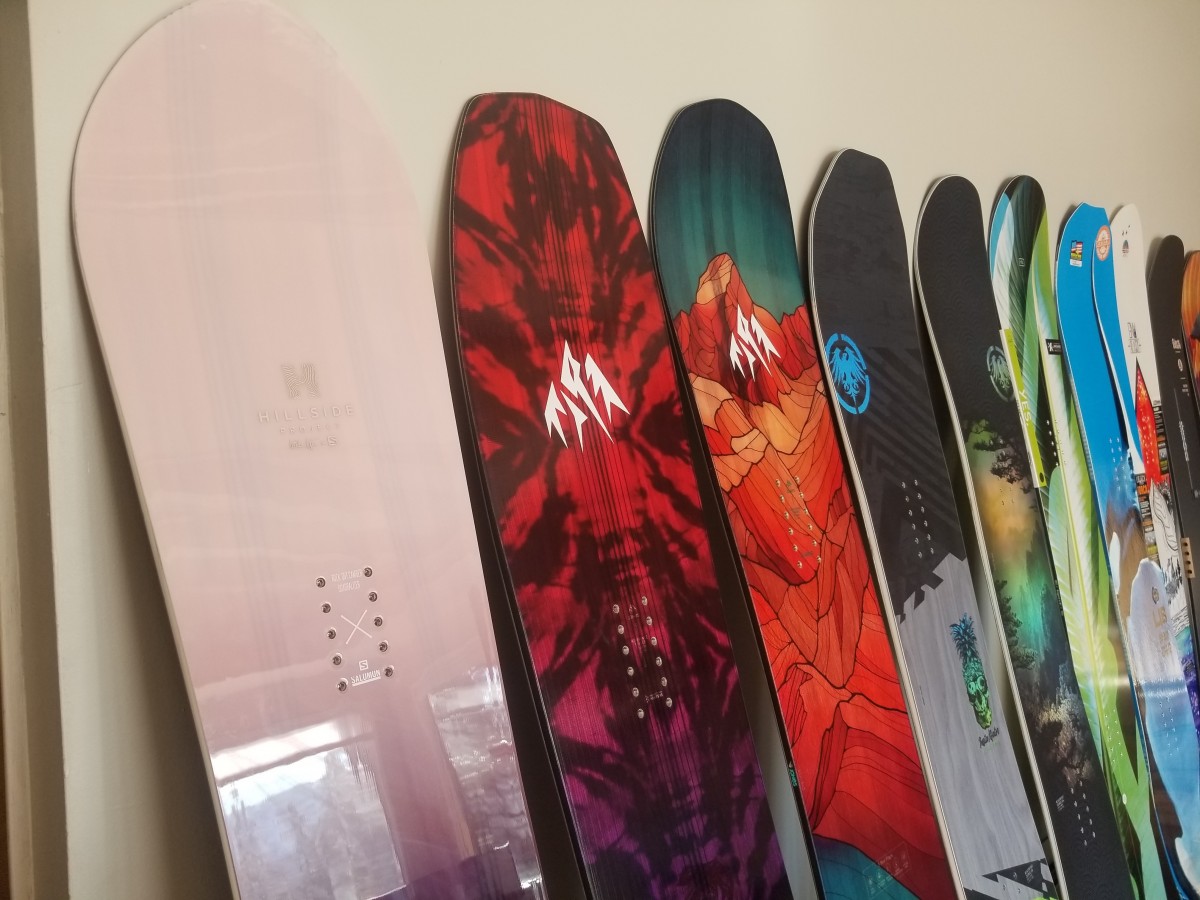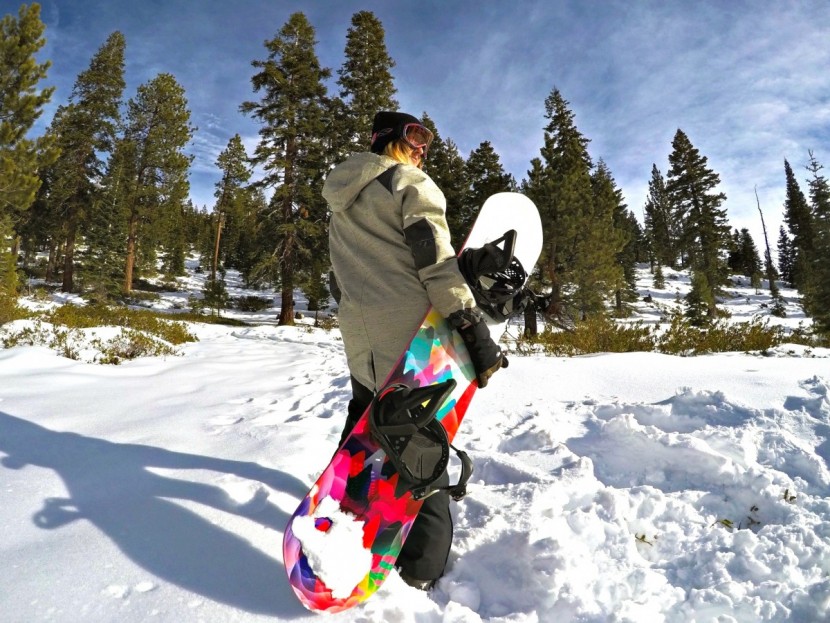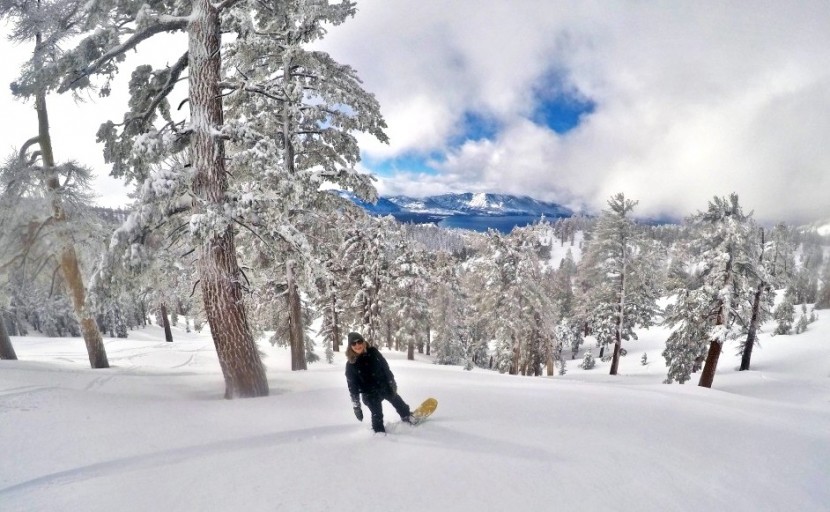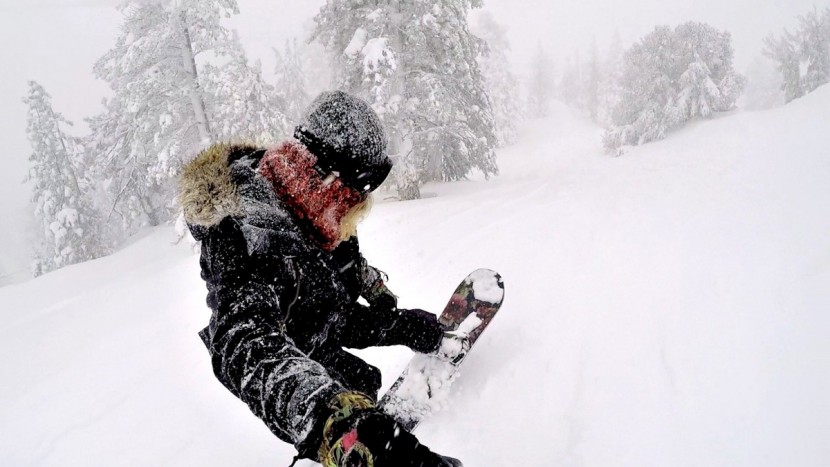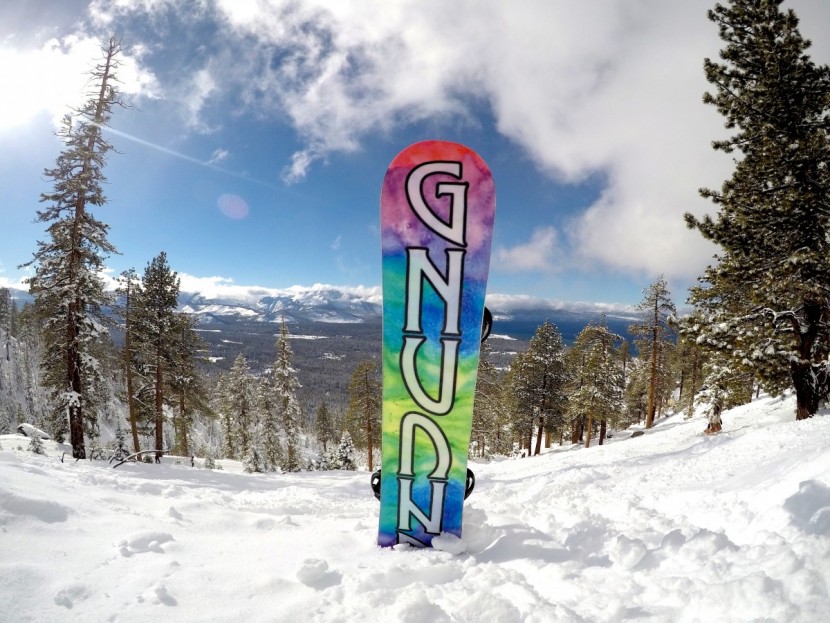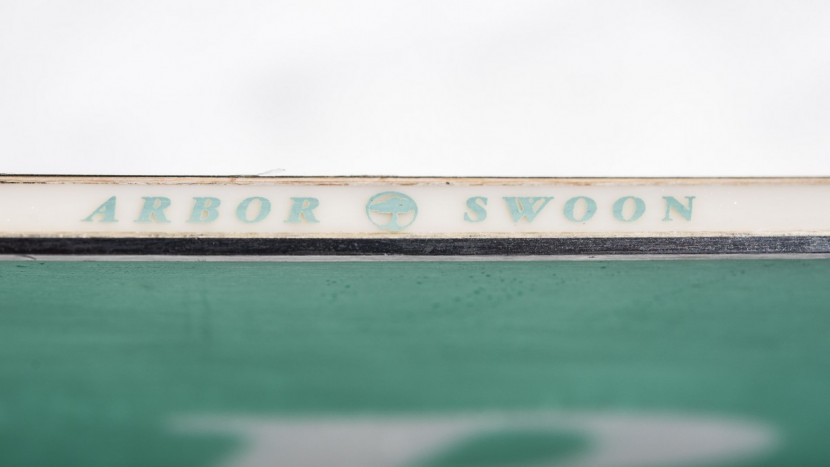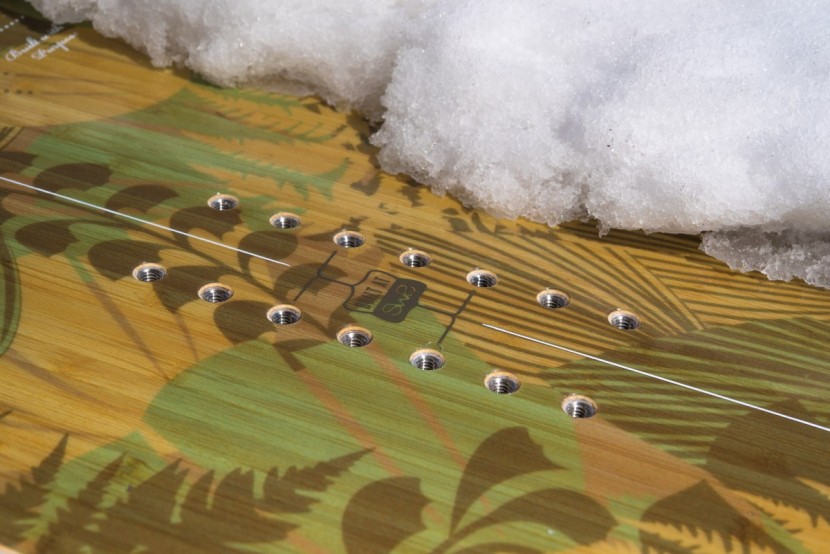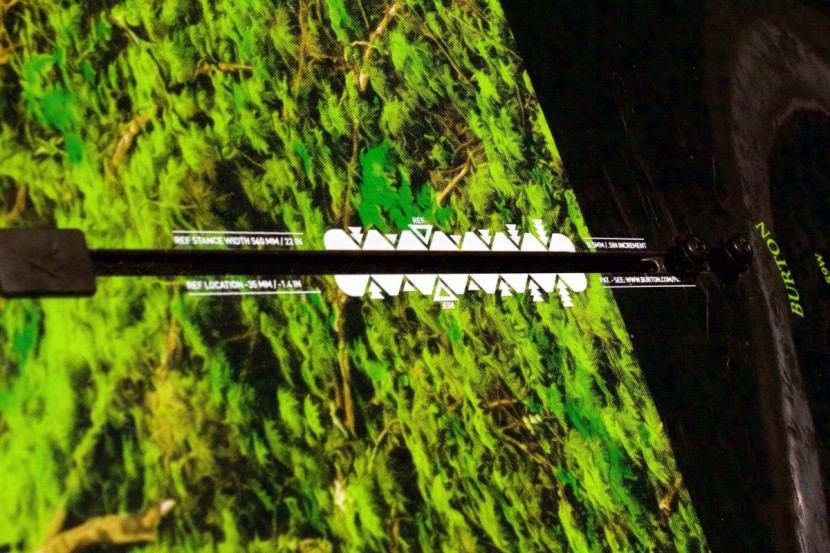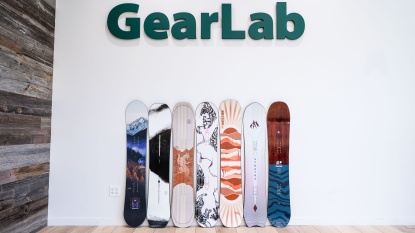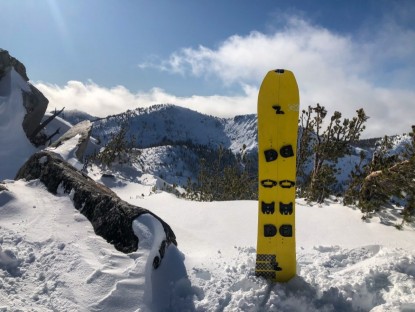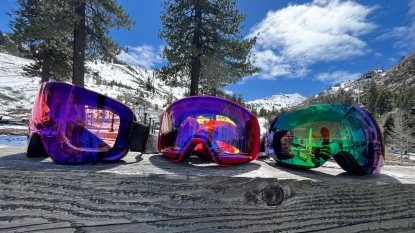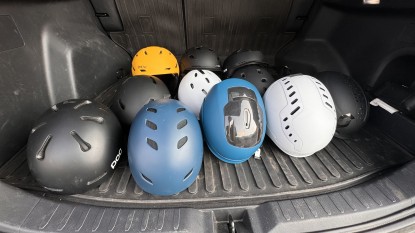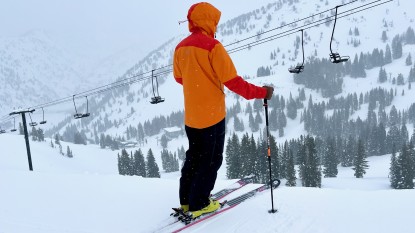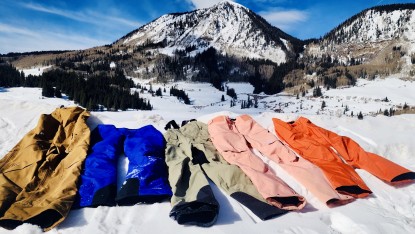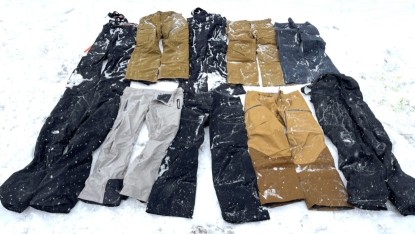Wondering which women's-specific snowboard is the right choice for you? Curious if these boards are actually a better ride for the ladies, or simply a “shrink it and pink it” version? In this article, we look at what makes a women's specific snowboard women's specific, the different types available, and their pros and cons. We break down what to look for when shopping for a new one so you can find the perfect board, whether you spend your days on the mountain shredding the steeps or playing in the park.
Why A Women's-Specific Snowboard?
Many outdoor gear manufacturers have taken a somewhat callous and thoughtless approach to designing female-specific outdoor gear; simply making it in a smaller size, throwing on some pink paint, and slapping on some flowery graphics was about the maximum effort expended on their part. Understandably, this has given female-specific gear — including snowboards — a bit of a bad rap, as there usually was an inexplicable price increase accompanying all of those pink and pastel paint shades. However, this has all been changing in recent years. More and more manufacturers have been doing significant research and releasing seriously cool products that are truly designed for women, actually taking biomechanical and physiological differences between how men and women into account when creating their gear.
Although it may seem like these boards have just been given the pretty in pink treatment, there's some serious technology behind ladies' snowboards. Due to structural differences in the body, men and women use different movement techniques when performing a single leg squat. Females naturally rotate their pelvis towards the weight-bearing limb, while males rotate in the opposite direction. As a result, women are more prone to knee injury and knee pain than men. It's important to have a board designed with the way your body moves in mind, so there can be some serious downsides if you settle for a men's board.
In addition to being both shorter and lighter than a men's snowboard, women's-specific snowboards are a great deal more flexible. Women generally have a lower center of gravity than men, so a smaller board is more infinitely more responsive and dramatically easier to maneuver. Additionally, the increased flexibility of a women's snowboard can also significantly reduce the risk of knee injury, compared to the increased chance when riding with a much heavier and stiffer men's snowboard.
Purchasing a board designed with these elements in mind will allow for smoother, more intuitive, and less injury-prone riding.
Just like their male counterparts, women's-specific snowboards don't only come in a single type, so the first thing you should consider when shopping for a new board is what type of riding do you normally do, where you ride, and if you plan on building — or can afford — a quiver of boards.
Which Type Of Board Should I Buy?
While there are plenty of crossovers and boards that blur the line between categories, snowboards typically fall into one of four categories: freestyle/park, powder, all-mountain, and freeride. In a perfect world, you would have one of each so you could pick the perfect board to maximize the current conditions and the terrain you are planning on riding. However, this is a bit unrealistic for most people, so it's important to think about what your style of riding actually is. Powder skiing might be your absolute favorite, and you love the idea of a board that absolutely kills it when you are in the deep stuff, but it probably doesn't make sense to get one if you only get to ski powder once or twice a year and are on the groomers for the rest of it — if you can only buy a single board. We'll go over the pros and cons of each type to help you pick the one that is the best fit for you.
Freestyle/Park
Freestyle boards are for riders that like to stay in the park — rails, walls, jumps, or flat ground. These boards are typically shorter and more flexible, which allows for a playful ride, along with greater control when jibbing or jumping. Park boards usually have a twin or asymmetrical twin shape, so you can land switch in style.
Freeride
Freeride boards are for those that ride powder when it's fresh and carve groomers when it's not. Typically larger in size with a stiff flex, these boards are more aggressive than freestyle boards. Freeride boards have a sharper edge hold than others for carving in hard-pack and cutting through ice. However, this style of board does make some concessions when it comes to skiing powder to be able to carve the groomers, so they can't compare to a dedicated powder board in the deepest powder stashes.
Powder
If you want to feel like you are actually flying down the mountain, a powder-specific board is the way to go — provided you have a few feet of champagne powder to play in. Powder boards are built to surf and float in the fluffiest and deepest of snowfalls. Usually directional (longer nose than tail), these boards can have some of the most obviously asymmetrical shapes, such as a swallowtail. Powder-specific boards are also relatively stiffer compared to freeride or all-mountain boards, as well as having a stance that is far more set back to maximize the surfy nature of these boards in deep snow.
All-Mountain
For the best qualities all-in-one, choose an all-mountain board. Designed for seamless transition between variable conditions, an all-mountain board can go from park to powder without blinking an eye. If you like to hop between tree runs, big groomers, and park laps all in one day, this is the style of board for you. For the vast majority of people, we would recommend they at least start with an all-mountain board.
Why All-Mountain Snowboards?
While we'd all like to live in a world where everyone has a hefty quiver of snowboards to choose from depending on conditions, not everyone can live like the pros. Most riders want one solid board that they feel comfortable taking on a wide variety of conditions. An all-mountain board is designed to perform well in all-terrain, whether it's fresh powder or spring park days. Until the days we can afford a quiver of condition-specific tools, a great all-mountain board will transform to serve you well regardless of the terrain and the snow conditions.
All-Mountain Options
However, just because an all-mountain board is one-size-fits-all when it comes to the mountain doesn't mean they are one-size-fits-all when it comes to a rider. There are a few different options to consider when selecting which all-mountain women's snowboard is the best fit for you.
Sizing
While many riders initially think that height influences board size, your snowboard doesn't care how tall you are. It's actually a rider's weight that determines the correct size. Weight has an enormous impact on a rider's ability to flex and turn the board; more weight means more control of the board beneath your feet.
Most companies offer a variety of sizes for each board. While each company has a sizing chart with a recommended weight range, these charts leave some room for personal preference. A smaller board will be easier to maneuver, while a longer board gives more stability and floats better in powder.
Flex
Each snowboard has its own flex pattern. Park boards are typically very soft for easy jibbing and clean rotations. Powder or speed boards are usually on the stiffer side. If you like a soft ride or prefer the park, you'll want something more flexible and forgiving. A longer, stiffer board will provide more support in powder and at high speeds. Bigger riders will traditionally prefer the stability and weight of a stiffer board.
Camber
Camber refers to the way a board lays flat on a surface. Traditional camber (aka regular or positive camber) has a long arch underfoot and touches down near the tip and tail. This provides long, even pressured contact with the snow when weighted. A camber profile offers a lively, stable ride that is popular among park riders for its responsive, springy feel.
A rocker profile, or reverse camber, touches down between the bindings and has an upturned tip and tail. This means less edge contact when the board is weighted, allowing it to pivot easily underfoot. This profile is excellent in powder or jibs and good for rotations. Most boards nowadays are a hybrid camber or a mix between rocker and camber. These profiles are each built to suit specific performance attributes.
Shape
Do you like to ride switch? Deep powder? Both? Some boards are designed to handle certain styles of riding more easily. It's important to decide if you want a twin tip, asymmetrical, or something directional. True-twin snowboards have an identical tip and tail, which makes switch riding feel similar to riding regular. Directional boards have a longer nose than tail, creating a surfboard feel underfoot when cruising through powder. These boards go more easily in one direction than the other. A directional twin has a symmetrical nose and tail but is set back to make riding in powder more intuitive.
Snowboard Construction
Board Composition
What goes into the snowboard during construction? From the base to the core to the topsheet, each piece is carefully crafted before it is assembled and becomes a snowboard.
Base
Snowboard bases are made of P-Tex, a high-density polyethylene plastic. A base will either be sintered or extruded. A sintered base is formed by grinding the base material into powder, heating it, pressing it, and slicing it into shape. An extruded base is formed by melting the base material down and cutting it into shape. Sintered bases are more expensive to make but are more durable, faster, and absorb wax better than extruded bases. Extruded bases are cheaper and need less maintenance, but are also slower and less durable. A base will usually be followed by a number, which refers to the molecular weight of the polyethylene. The higher the number, the higher the quality of the P-Tex (i.e., sintered 2000).
Core
What is the center of the board made from? The core of a snowboard might be the most important element, considering all other pieces are constructed around it. While most snowboards these days have a wooden core, a snowboard's core can be composed of various materials, such as foam or aluminum honeycomb. Wooden cores are typically composed of poplar, birch, or obeche wood. Strips of these woods are lined up vertically and laminated in order to create various flex patterns. Some companies will use Kevlar, carbon fiber, or metals to strengthen a board's core.
Edge
Metal edges run the length of either side of the snowboard, allowing you to cut into snow when riding. Not all boards' edges run along the entire perimeter of the board, but full-coverage edges can protect your board's nose and tail from damage. Edge technology such as Gnu's Magne-Traction or Burton's FrostBite creates a knife-like serration along the edge, allowing a more seamless carve through icy conditions.
Sidewall
The sidewall is the area along the metal edge of the snowboard, and it has three basic constructions: ABS sidewall, cap, or a hybrid of the two. ABS is a heavy, dense material that is used to make boards more durable, more torsionally stiff, and have better edge grip. If a cap construction pops or breaks, moisture can leak into the core and cause serious damage. All the boards we tested have ABS sidewall, which is typical on high-performance snowboards.
Topsheet
The topsheet of a snowboard not only displays the graphics, but also protects the inside of your board from the elements. Topsheets are typically made from nylon, wood, fiberglass, plastic, or composites.
Inserts
Inserts are the threaded stainless steel holes in a snowboard that allow you to attach bindings. Most snowboards have a standard 2x4 or 4x4 insert pattern, which references the vertical and horizontal measurements between holes in centimeters. These inserts allow you to customize your stance by moving along the rows of holes to your desired width.
Burton has patented their Channel technology, a new form of inserts that attaches bindings along a slit in the middle of the board. While this tech means you've got to get special Channel-friendly EST bindings, it provides virtually endless stance options and allows a quicker transition if you decide to adjust your stance.
Conclusion
Hopefully, this has cleared up any confusion you may have had about the difference between a men's and women's snowboard, the different varieties available, and what to look for when you are shopping for a new snowboard. If you want to see which women's-specific snowboards we thought are the absolute best, check out our comprehensive all-mountain snowboard review for women or take a look at our How We Test article for a complete explanation of our testing procedures and methodologies.

